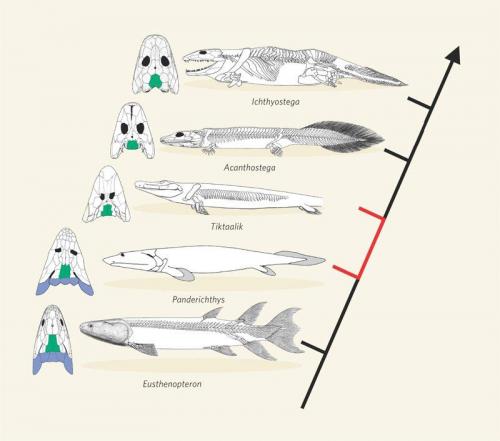Amphibia (Amphibians)
Amphibians (class Amphibia, from Amphi- meaning "on both sides" and -bios meaning "life"), are a class of vertebrate animals including animals such as frogs, caecilians, and salamanders. They are characterized as non-amniote ectothermic (or cold-blooded) tetrapods. Most Amphibians undergo metamorphosis from a juvenile water-breathing form to an adult air-breathing form, but some are paedomorphs that retain the juvenile water-breathing form throughout life. Mudpuppies, for example, retain juvenile gills in adulthood. The three modern orders of amphibians are Anura (frogs and toads), Caudata (salamanders and newts), and Gymnophiona (caecilians, limbless amphibians that resemble snakes), and in total they number approximately 6,500 species. Many amphibians lay their eggs in water. Amphibians are superficially similar to reptiles, but reptiles are amniotes, along with mammals and birds. The study of amphibians is called batrachology.
Amphibians are ecological indicators, and in recent decades there has been a dramatic decline in amphibian populations around the globe. Many species are now threatened or extinct.
The earliest amphibians evolved in the Devonian period from lobe-finned fish that used their strong, bony fins to venture onto dry land. They were the top predators in the Carboniferous and Permian periods, but they later faced competition from their descendants, the reptiles, and many lineages were wiped out during the Permian–Triassic extinction. One group, the metoposaurs, remained important predators during the Triassic, but as the world became drier during the Early Jurassic they died out, leaving a handful of relict temnospondyls like Koolasuchus and the modern orders of Lissamphibia.
Source: http://en.wikipedia.org/wiki/Amphibians In the Virtual Museum there are total 36 samples | ||
Virtual museum of the Czech Geological Survey, www.geology.cz, (C) Czech Geological Survey, 2011, v.0.99 [13.12.2011]


![[ENG]](img/vlajka-cr.gif) Česky
Česky 

